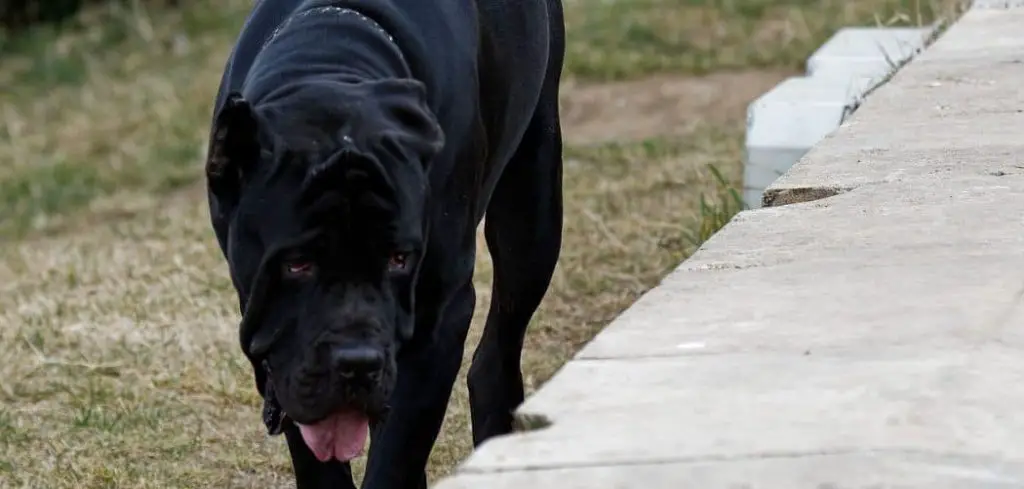When your dog is limping or favoring a leg and also refuses to eat, it’s a worrying combination of symptoms
We outline the common causes of a dog’s hurt leg and not eating, what you can do at home, and when to seek veterinary help.
Dog Hurt Leg and Not Eating — Why It Happens
If your dog has a hurt leg and isn’t eating, pain and stress are likely causing the loss of appetite. Injuries can make movement difficult and trigger discomfort, leading your dog to withdraw and avoid food. In some cases, infection, inflammation, or shock from the injury may also contribute.

Dog Hurt Leg and Not Eating: Common Causes
Soft Tissue Injury (Sprains and Strains)
Dogs often injure muscles, tendons, or ligaments during active play or sudden movements.
A pulled muscle or mild sprain can make your dog limp or avoid using a leg altogether. The associated discomfort or swelling may lead to stress, which can suppress appetite.
You may notice your dog licking at the painful area, limping, or being reluctant to rise or jump.
Even though it may seem minor, untreated soft tissue injuries can worsen or cause long-term discomfort if not managed properly.
Fractures or Bone Trauma
More serious than sprains, fractures or broken bones cause immediate pain and usually severe lameness.
Your dog may refuse to bear weight, cry out in pain, or avoid movement altogether. The stress and inflammation that accompany a break can also suppress hunger.
Appetite loss is common in painful trauma cases and can be made worse by internal bleeding or shock.
If your dog has a visible deformity, is yelping, or won’t let you touch the leg, a fracture should be suspected.
Infected Wounds or Abscesses
Puncture wounds or scrapes on the leg can become infected, leading to swelling, heat, and pus formation.
This localized infection can be very painful and often makes dogs avoid eating due to systemic discomfort or fever.
Check carefully for signs like redness, foul odor, limping, or tenderness around a specific area of the leg.
Left untreated, an infected wound can worsen into a deep abscess or spread infection to the bloodstream.
Read more: Dog Limping and Not Eating (Should you worry?)
Arthritis or Joint Inflammation
In older dogs, especially large breeds, joint pain from arthritis may become severe enough to cause a noticeable limp and reduced appetite.
The pain and stiffness worsen with activity, and your dog might struggle to get up or down.
Dogs with arthritis sometimes become depressed or withdrawn, further reducing interest in food.
Chronic pain can lead to appetite suppression, making it essential to manage both inflammation and nutrition.
Tick-Borne Diseases
Infections like Lyme disease or ehrlichiosis, transmitted by ticks, can cause joint pain, lethargy, and loss of appetite.
These diseases can inflame joints and tissues, leading to limping or refusal to walk. Dogs may also develop fevers, swollen lymph nodes, or changes in behavior.
Appetite loss is a hallmark symptom and often appears alongside other vague signs of illness.
Prompt diagnosis and treatment with antibiotics are essential.
Neurological Issues
Conditions affecting the spine, such as intervertebral disc disease (IVDD) or nerve damage, can cause a dog to walk abnormally and avoid food due to pain or discomfort.
These cases may involve back or neck stiffness, dragging of a leg, or trembling.
The neurological discomfort can lead to general malaise and appetite loss, especially if your dog struggles to position themselves at the food bowl.
This type of condition requires urgent veterinary evaluation.
What to Do If Your Dog Is Hurt and Not Eating
If your dog is limping and not eating, start by keeping them calm and confined to prevent further injury.
Try to assess the affected leg gently. Look for swelling, cuts, heat, or tenderness. Avoid forcing movement if your dog resists touch.
Offer small portions of bland, tempting food like boiled chicken or plain rice to see if appetite can be coaxed.
Keep your dog hydrated. If they’re refusing both food and water for more than a day, it’s time to act.
Limit activity and avoid walks until a vet confirms the injury is minor.
If you’re unsure whether the limp is serious or you’re seeing signs of pain, get your dog evaluated.
When to Call or Visit Your Vet
Seek veterinary help if:
Your dog refuses to bear weight on a leg.
The leg is swollen, warm, or visibly deformed.
Your dog yelps, growls, or snaps when touched.
Appetite loss lasts more than 24 hours.
You notice fever, vomiting, or extreme lethargy.
The dog seems depressed or withdrawn.
Prompt treatment improves healing and reduces the risk of chronic pain or infection.
Read more: Dog Hot and Not Eating (Here’s what’s causing this)
Key Takeaway
A hurt leg paired with appetite loss should never be ignored. Whether it’s a simple sprain, infection, or something more serious like a fracture or tick-borne illness, your dog needs rest, comfort, and sometimes medical treatment.
If your dog isn’t improving quickly or refuses to eat, don’t wait—call your vet. Early care makes all the difference.
